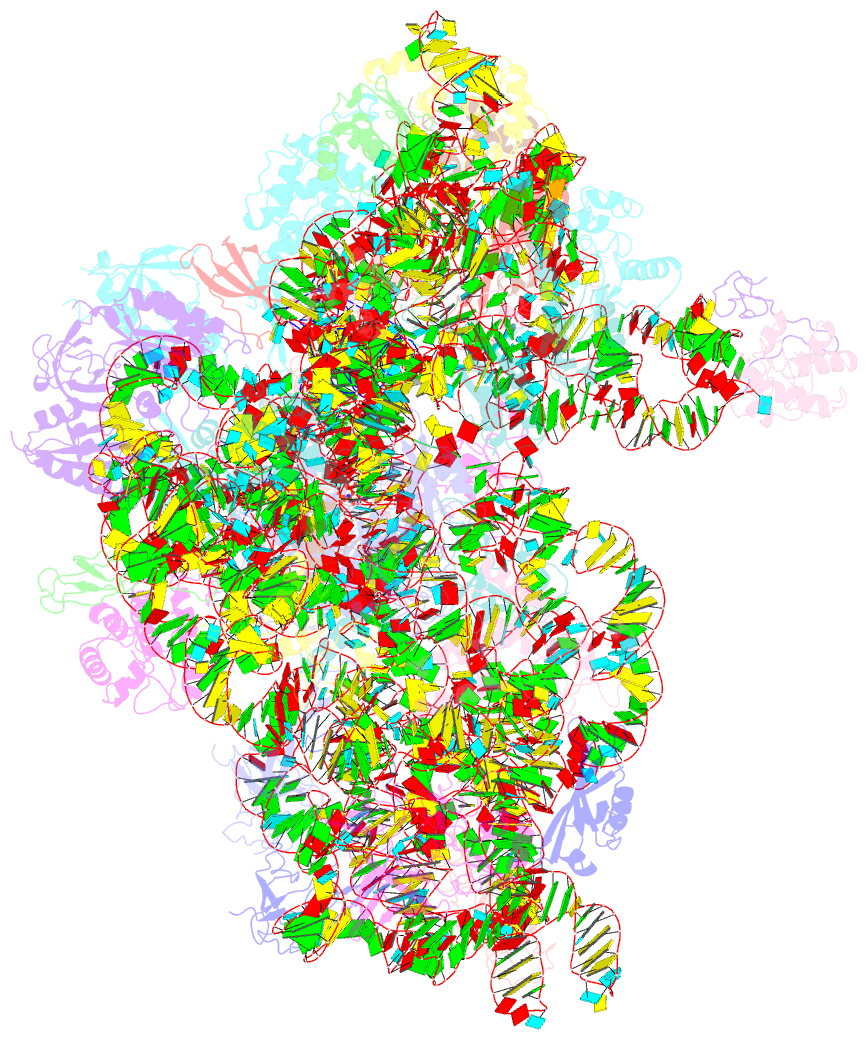Summary information and primary citation
- PDB-id
- 6sw9; SNAP-derived features in text and JSON formats;
DNAproDB
- Class
- ribosome
- Method
- cryo-EM (4.2 Å)
- Summary
- Ic2a model of cryo-EM structure of a full archaeal ribosomal translation initiation complex devoid of aif1 in p. abyssi
- Reference
- Coureux PD, Lazennec-Schurdevin C, Bourcier S, Mechulam Y, Schmitt E (2020): "Cryo-EM study of an archaeal 30S initiation complex gives insights into evolution of translation initiation." Commun Biol, 3, 58. doi: 10.1038/s42003-020-0780-0.
- Abstract
- Archaeal translation initiation occurs within a macromolecular complex containing the small ribosomal subunit (30S) bound to mRNA, initiation factors aIF1, aIF1A and the ternary complex aIF2:GDPNP:Met-tRNAiMet. Here, we determine the cryo-EM structure of a 30S:mRNA:aIF1A:aIF2:GTP:Met-tRNAiMet complex from Pyrococcus abyssi at 3.2 Å resolution. It highlights archaeal features in ribosomal proteins and rRNA modifications. We find an aS21 protein, at the location of eS21 in eukaryotic ribosomes. Moreover, we identify an N-terminal extension of archaeal eL41 contacting the P site. We characterize 34 N4-acetylcytidines distributed throughout 16S rRNA, likely contributing to hyperthermostability. Without aIF1, the 30S head is stabilized and initiator tRNA is tightly bound to the P site. A network of interactions involving tRNA, mRNA, rRNA modified nucleotides and C-terminal tails of uS9, uS13 and uS19 is observed. Universal features and domain-specific idiosyncrasies of translation initiation are discussed in light of ribosomal structures from representatives of each domain of life.





